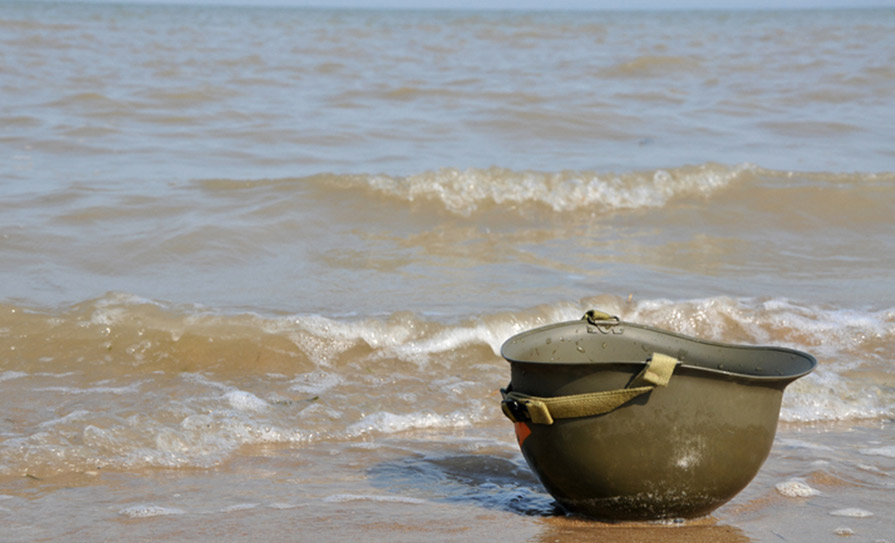<h3>On the slippery slope to antibiotic resistance</h3>
Despite increasing awareness among health professionals,
antibiotic resistance could do with a few more column
inches than it currently receives in the mainstream
press. No doubt you see many patients who come into
your surgery demanding antibiotics to treat little Jimmy’s sniffle.
If you are having trouble convincing them otherwise, and if you
have the time, there’s an interesting little video that might help.
The good folks at Harvard Medical School, US, and the
Technion-Israel Institute of Technology, Israel, have put together
a striking fast-motion video to illustrate how quickly
bacteria can mutate to become resistant to antibiotics.
The video is linked to a study published a couple of weeks ago
in Science and to make their point, the researchers built a giant
Petri dish, which they dubbed the Microbial Evolution Growth
Arena Plate, otherwise known as the MEGA plate (who comes
up with these acronyms?). They dropped in some E.Coli, and
the scene was set. Various strengths of antibiotic were placed
on separate sections of the MEGA plate, with each one 10
times stronger than the last. The antibiotic at the centre of the
dish was 1,000 times stronger than the one on the outside.
A camera tracked the E.Coli’s progression over 14 days and
clearly showed the bacteria’s mutation in dramatic fashion.
It’s an interesting study approach and a nice shot in the arm
for antibiotic resistance awareness.
Check out the study at http://science.sciencemag.org/content/
353/6304/1147.full.
*********************************
A lot of questions have been raised recently about the health
of US Presidential candidate Hillary Clinton. Videos have been
surfacing of her having uncontrollable coughing fits and appearing
to be dazed, confused and unsteady on her feet.
The Clinton camp has been dismissing these suggestions as
Trump scaremongering or nonsense from the tin-hat brigade,
but at time of going to press, footage has emerged of her legs giving
way, requiring her to be physically carried into her limousine
at a 9/11 commemoration ceremony.
The official line and ‘diagnosis’ from her physician, who so
far has not been presented for interview, is pneumonia. However,
this doesn’t tally with her appearance and the general
symptoms. Many questions have been asked about her muchphotographed
unusual spectacles and on the day she collapsed,
she was wearing blue anti-seizure sunglasses.
Ophthalmologist Dr Marc Werner also told Fox News
the lined spectacles she has been photographed with have a
Fresnel prism to prevent double-vision due to severe head
trauma, among other conditions (she was hospitalised in 2013
with a blood clot in her head due to concussion).
Clinton has cancelled a host of commitments because of her
‘pneumonia’ and ‘dehydration’. I hate to suggest that a politician
may be less than open and honest with the public, but
this is an interesting one for the medical detectives among us.
Indicated for the maintenance treatment
of schizophrenia in adult patients1*
<h3>Tonic for the troops?</h3>
If you enjoy a gin and tonic at the end of the day, probably
best to look away now.
A team of researchers at Innsbruck University, Austria,
have suggested that G&T drinkers have “psychopathic tendencies”
in comparison to those who prefer a different tipple.
Some 1,000 people were involved in two separate studies,
including personality questionnaires that measured
their “Machiavellianism, psychopathy, narcissism and everyday
sadism”.
The participants were then asked to rank how much they
concurred with statements such as, ‘I have threatened people
I know’ and ‘I enjoy tormenting people’.
The end result was a conclusion that people with “bitter
taste preferences are linked to malevolent personality
traits”.
The same, apparently, applies to strong dark chocolate
and strong coffee.
Study author Dr Christina Sagioglou stated that most
people are put off by bitter-tasting foods because we subconsciously
associate them with poison. People with psychopathic
tendencies, however, are attracted by this taste
sensation, she said.
“Everyday sadism is a construct related to benign masochism
— the enjoyment of painful activities — which was
first described and investigated by psychologist Paul Rozin.
“To quote Paul Rozin for an explanation: ‘For the case of
innately aversive foods, there may be pleasure from the fact
that the body is signalling rejection, but the person knows
there is no real threat’.”
But what if you take sugar?
<h3>Words for life</h3>
A couple of dubious daily affirmations to finish, kindly
sent to me by a reader.
• I no longer need to punish, deceive or compromise myself.
Unless, of course, I want to stay employed.
• Today, I will gladly share my experience and advice, for
there are no sweeter words than ‘I told you so’.
• Why should I waste my time reliving the past when I
can spend it worrying about the future?
• I am willing to make the mistakes if someone else is
willing to learn from them.












Leave a Reply
You must be logged in to post a comment.